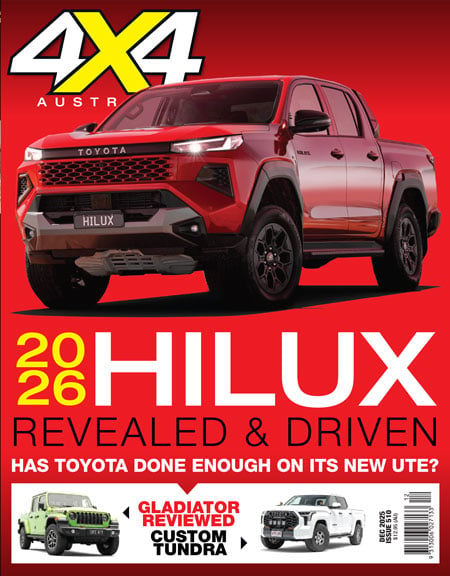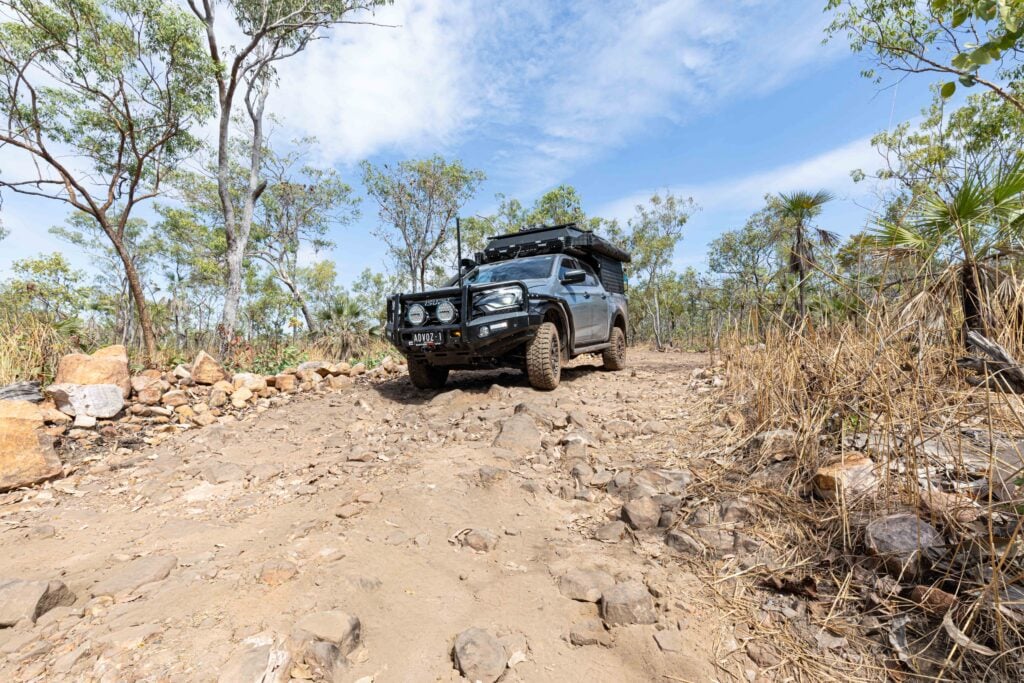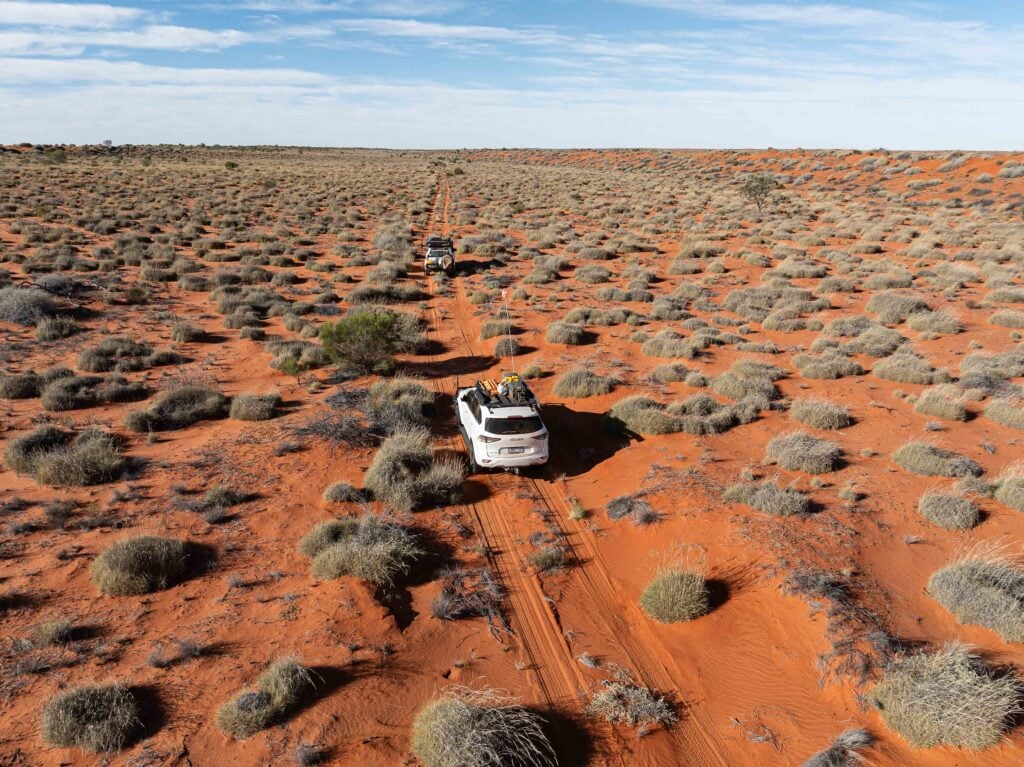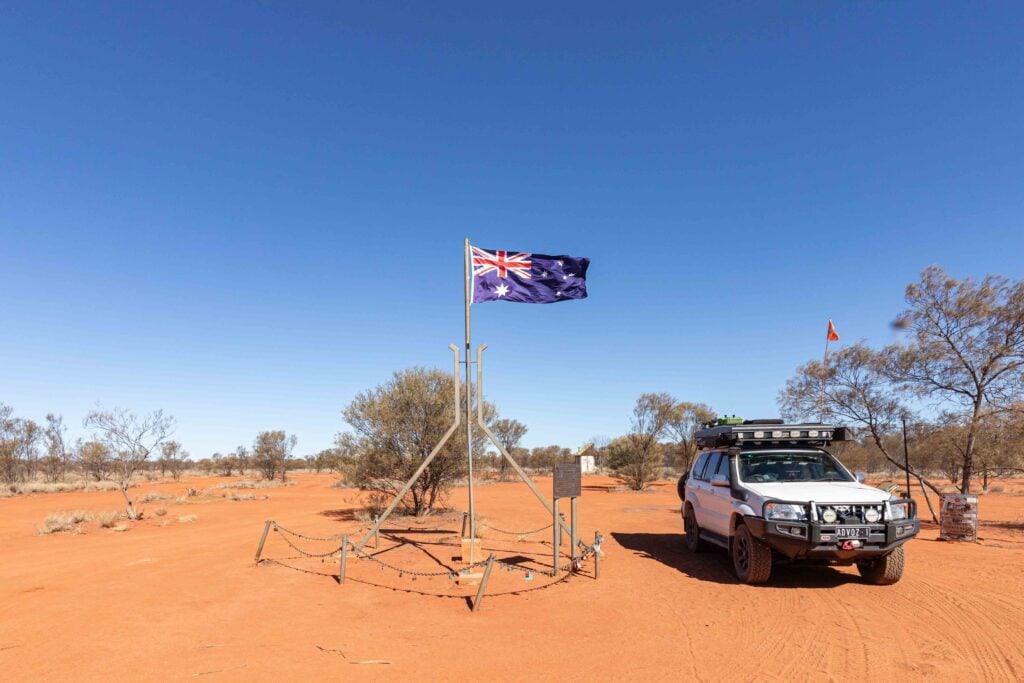Arnhem Land in the Northern Territory is one of Australia’s last great wilderness regions.
Covering more than 97,000 square kilometres, it’s a place where ancient Aboriginal culture lives on among rugged coastlines, monsoonal forests and remote communities. For four-wheel drivers, it offers an adventure like no other – a rare chance to experience Indigenous heritage alongside raw natural beauty.
Access to this sacred land demands careful planning, respect for local culture and a well-prepared vehicle. This guide will help you get ready for a self-sufficient journey through Arnhem Land – one that treads lightly and shows respect along the way.
JUMP AHEAD
- Understanding Arnhem Land
- Permits and access
- Alcohol restrictions
- When to go
- Essential vehicle preparation and gear
- Trip planning and itineraries
- Important considerations
- Fast facts
- Top five must-visit locations
Understanding Arnhem Land
In the northeast corner of the Northern Territory, Arnhem Land is bordered by the Arafura Sea to the north and east, Kakadu National Park to the west, and the Gulf of Carpentaria to the south.
This captivating region is predominantly Aboriginal-owned, with the Yolŋu people as its primary custodians. Their connection runs far deeper than the physical landscape – it’s spiritual, cultural and enduring. Traditions, languages and ceremonies have been passed down through countless generations, keeping culture alive in Arnhem Land today.
The landscape of Arnhem Land is strikingly diverse – from pristine beaches and vibrant wetlands to rugged escarpments and expansive savannah woodlands. This variety supports an incredible range of wildlife, from saltwater crocodiles and wild buffalo to bird species found nowhere else on Earth.
Arnhem Land’s remoteness is a big part of its appeal. Much of the region remains pristine and unspoiled, rewarding those willing to venture off the beaten path with a rare wilderness experience. Visitors are often rewarded with encounters that deepen their appreciation for both the land and its inhabitants, making a journey to this extraordinary part of Australia truly unforgettable.
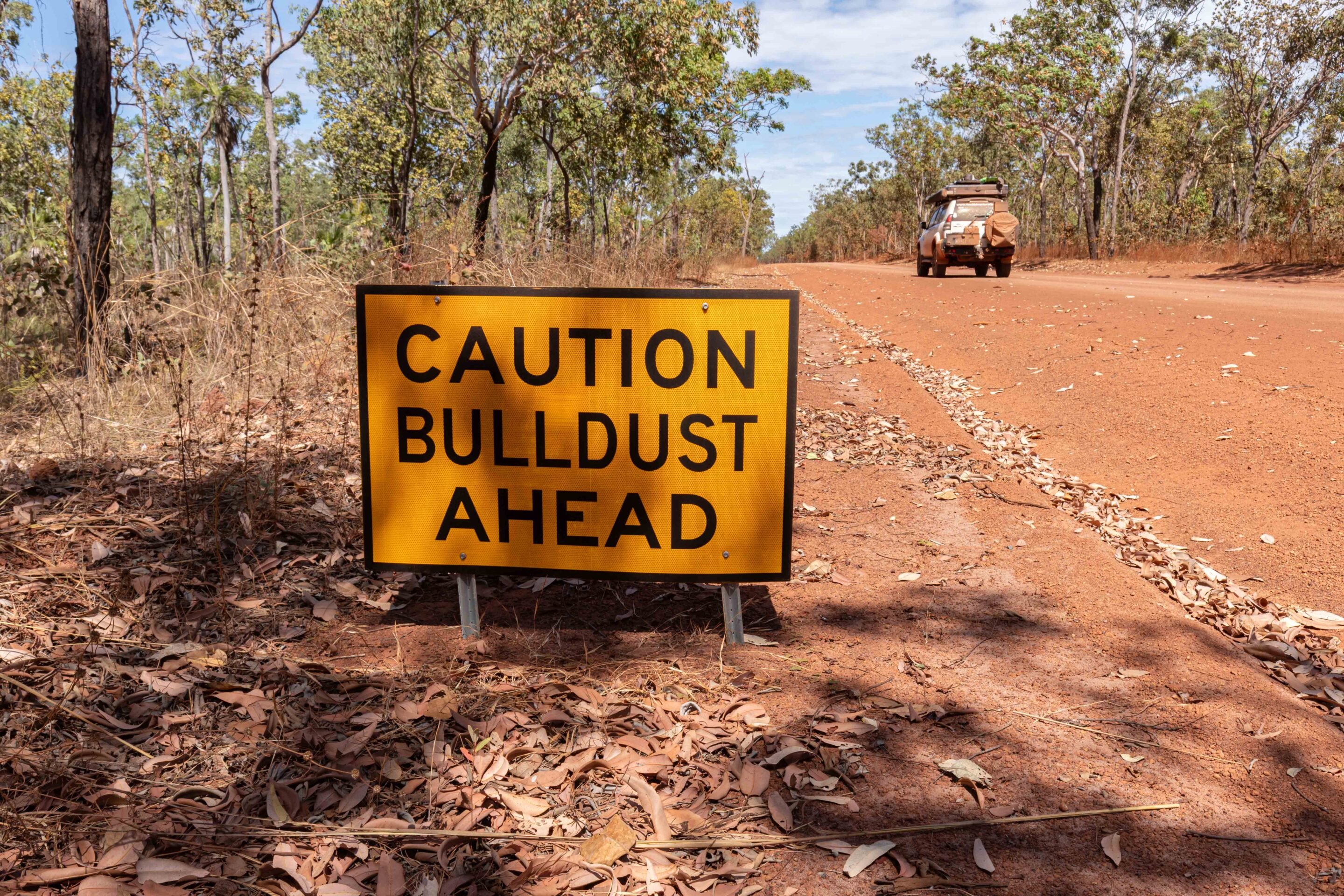
Permits and access
Access to Arnhem Land is strictly regulated to protect its cultural heritage and fragile environment. Visitors must obtain permits before entering, camping or travelling through the region – an important step in respecting both local traditions and natural ecosystems.
Northern Land Council (NLC)
The Northern Land Council (NLC) manages permits for general access, transit and special purposes within Arnhem Land. Applications can be lodged online via the NLC website or in person at regional offices. Travellers are strongly advised to apply well ahead of their trip, as processing times can vary. Early planning ensures smoother entry and allows time for approvals to be finalised.
Dhimurru Aboriginal Corporation
In the Nhulunbuy and Gove Peninsula region, permits are issued by the Dhimurru Aboriginal Corporation. These include Visitor Access Permits for recreational areas and camping permits for designated visitor sites. Applications can be submitted online. It’s essential for all visitors to follow the guidelines provided by the corporation. This ensures sacred sites are protected and local customs and traditions – central to the region’s Indigenous culture – are respected.
Garig Gunak Barlu National Park
Garig Gunak Barlu National Park, on the Cobourg Peninsula, requires separate permits managed by NT Parks and Wildlife. These cover entry as well as camping permissions. Visitors must contact NT Parks and Wildlife directly to arrange permits. This ensures compliance with regulations while protecting the park’s natural beauty and ecological significance.
Kakadu National Park
To reach Arnhem Land by road, you’ll need to travel through Kakadu National Park – and that means buying a park pass. Pass prices vary by season, with cheaper rates from November to May. Each pass is valid for seven days only, so travellers heading into East or North Arnhem Land will likely need to purchase two passes to cover their trip.
Securing the right permits is essential for anyone planning to explore Arnhem Land and its surrounds. By following the rules set by the relevant authorities, visitors can enjoy a rewarding experience while helping preserve the cultural and environmental integrity of this extraordinary region.
Alcohol restrictions
Arnhem Land has some of the strictest alcohol laws in Australia, and visitors must take them seriously.
Much of the region is designated a General Restricted Area (GRA) under the NT Liquor Act, meaning the possession, transport and consumption of alcohol is heavily restricted or, in many cases, prohibited altogether. Key points for travellers:
- Dry Communities: Most Aboriginal communities in Arnhem Land are completely dry. No alcohol is permitted at any time, regardless of permits. Carrying alcohol without approval is a serious offence.
- Permit System: Around the Gove Peninsula and Nhulunbuy, alcohol permits operate but are generally only issued to residents. They specify how much and what type of alcohol can be purchased, and where it may be consumed – usually private residences or licensed venues.
- Licensed Venues: Visitors may only consume alcohol at designated licensed premises such as hotels, clubs or lodges.
- No Takeaway Alcohol: Takeaway sales are not available to visitors without a permit in restricted areas such as Nhulunbuy.
- Transporting Alcohol: You cannot transport alcohol through restricted areas without an explicit exemption. Even sealed bottles in your vehicle can result in fines or prosecution.
- Do your homework before you travel: Contact NT Police, the Northern Land Council (NLC) or the Dhimurru Aboriginal Corporation for the latest information on specific communities.
- Never assume alcohol is permitted just because you’re in a town or camped nearby.
- Always respect the rules, which are in place to protect community wellbeing and uphold cultural laws.

When to go
The best time to visit Arnhem Land is during the dry season, from May to October. Conditions are cooler and more comfortable for camping, touring and outdoor adventures.
Humidity is also much lower at this time of year, making it ideal for experiencing the region’s unique flora and fauna. Importantly, most main roads are open and accessible, allowing easier travel between attractions and communities. By contrast, the wet season runs from November to April and brings heavy rain that can render many roads impassable. Travel is more difficult and the risk of cyclones adds an extra safety concern for visitors.
For these reasons, travel during the wet season is generally discouraged. Access to communities and attractions is often limited, and outdoor activities can become both difficult and dangerous. To make the most of Arnhem Land – and to travel safely – it’s best to plan your trip for the dry season.

Essential vehicle preparation and gear
A four-wheel drive trip into Arnhem Land calls for thorough preparation to ensure safety and enjoyment. The region’s rugged terrain and isolation make it vital to equip both yourself and your vehicle properly. Here are the essentials to consider before setting off:
Vehicle requirements
- High-Clearance 4×4: A proper high-clearance four-wheel drive is essential for Arnhem Land’s unsealed roads and challenging tracks. Rocky sections and deep ruts are common, and extra clearance helps prevent underbody damage and reduces the risk of getting stuck.
- Jerry Cans or Long-Range Tank: Fuel stops are few and far between, so carrying extra fuel is critical. Jerry cans or a long-range tank give you the autonomy to cover extended distances without being caught short.
- All-Terrain Tyres: Strong, durable all-terrains are a must for the mix of rocky, sandy and unpredictable surfaces. Check that your tyres are in good condition and correctly inflated before departure.
Recovery gear
- Winch and Snatch Straps: In remote areas, self-recovery gear is vital. A winch and snatch straps can get you moving again if you’re bogged in deep sand or mud, reducing the risk of being stranded.
- Recovery Tracks and Shovel: Recovery tracks provide the traction needed to drive out of soft sand or mud. A long-handled shovel is equally important for digging out wheels and clearing ruts.
Communication equipment
- UHF Radio: A must for short-range comms with fellow travellers. Easy communication improves safety and coordination when touring in a group.
- Satellite Phone, GPS Messenger or Starlink: Mobile coverage is patchy to non-existent in Arnhem Land. Carrying a sat phone, GPS messenger or Starlink system is vital for emergencies, ensuring you can call for help no matter how remote you are.
Camping and safety gear
- First Aid Kit: Carry a comprehensive kit suited for remote travel, with bandages, antiseptics and any personal medications you might need.
- Water and Food Supplies: Resupply points are scarce, so pack enough provisions for your trip plus extra in case of delays from weather or track conditions.
- Navigation Tools: Reliable navigation is critical. Take detailed maps and a GPS so you can stay on course and pinpoint your location even in the most remote areas.
Final preparations
Before setting off, make sure your vehicle is freshly serviced and all equipment is in good working order. A thorough maintenance check can prevent breakdowns and help ensure a smoother trip. Where possible, travel with another vehicle. A companion 4×4 provides extra security in case of mechanical failure or emergencies, making your Arnhem Land journey both safer and more enjoyable.
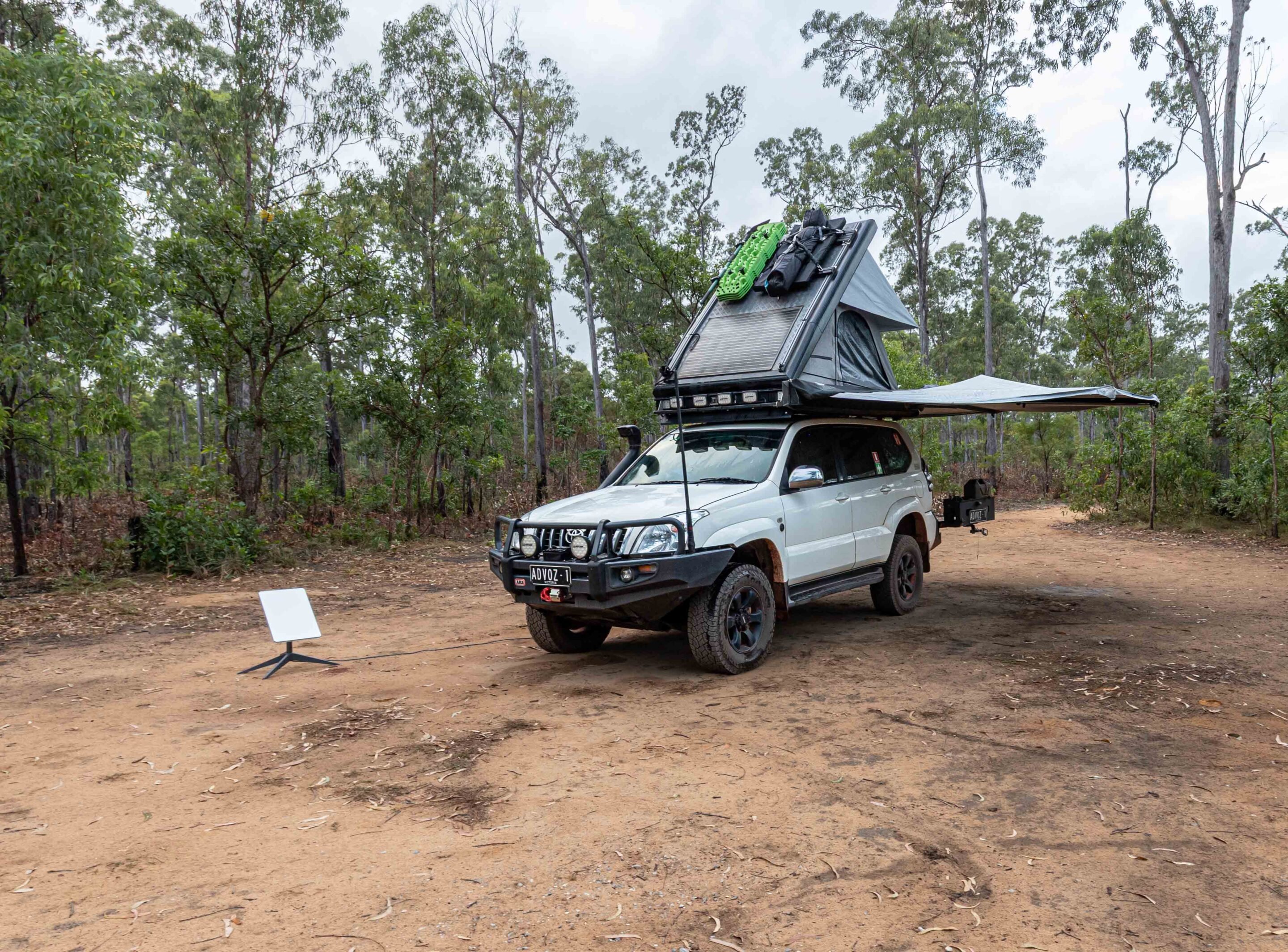
Trip planning and itineraries
Careful route planning is key to any Arnhem Land adventure. It helps you make the most of your time, ensures you reach the region’s highlights, and allows you to experience both the landscapes and the rich cultural heritage along the way.
Central Arnhem Road to Nhulunbuy
The 700km run from Katherine to Nhulunbuy is one of the great outback drives, crossing landscapes that shift from bushland and wetlands to rocky outcrops and coastal views. Allow at least three to four days for the journey so you can stop and explore along the way. Highlights include the tranquil Goyder River – a top spot for fishing or a picnic – as well as cultural sites that give insight into the region’s Indigenous heritage. Take your time, as this is a drive best savoured.
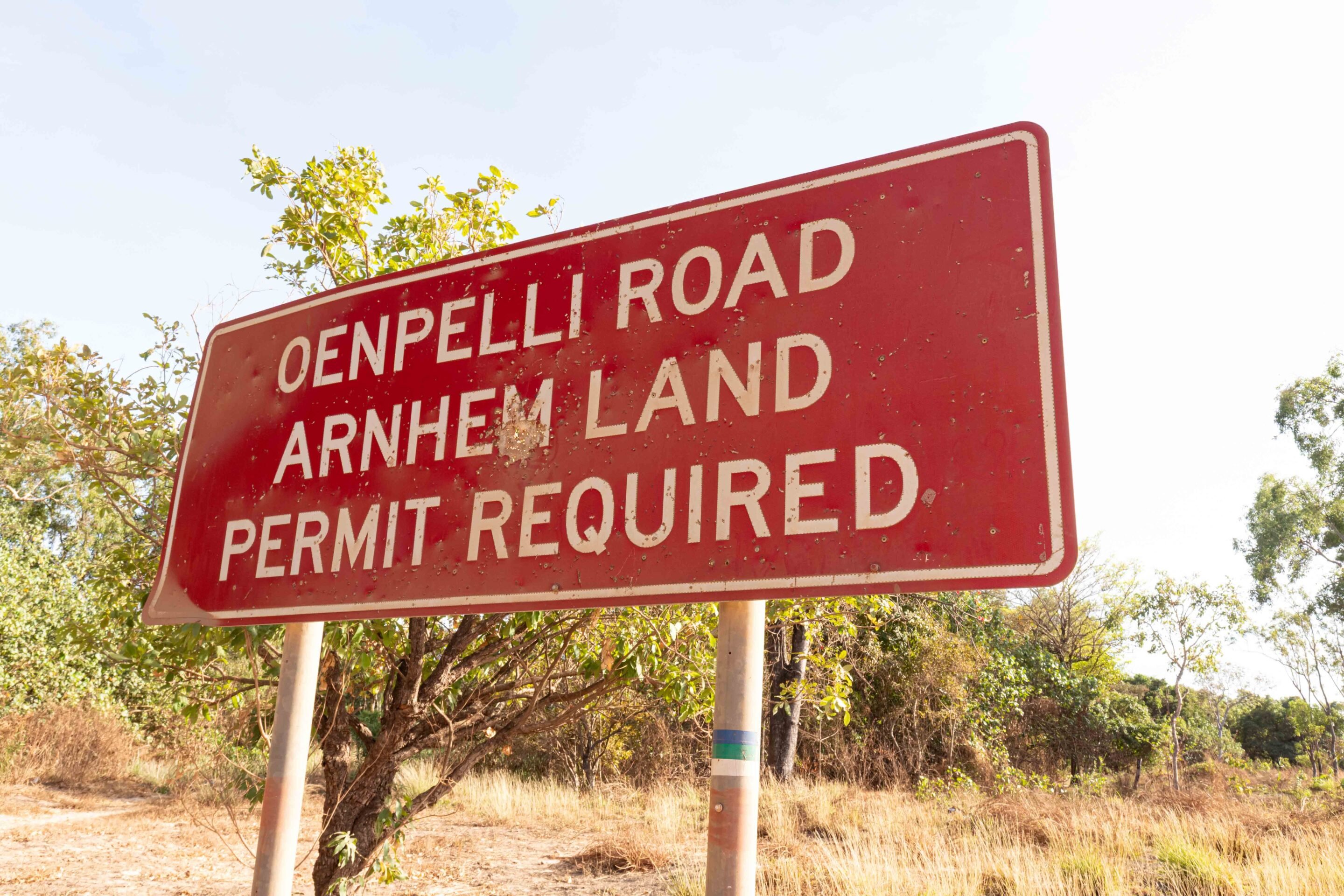
Gove Peninsula and surrounds
Nhulunbuy makes an ideal base for exploring the Gove Peninsula. Nearby Yirrkala is renowned for its art centre, where visitors can view local Aboriginal art, watch traditional crafts being made and purchase unique works direct from the artists. Cape Arnhem, with its pristine beaches, is another highlight – perfect for swimming, fishing or simply relaxing. Plan to spend three to five days in the region to fully appreciate its natural beauty and take part in cultural experiences at an unhurried pace.
Cobourg Peninsula and Garig Gunak Barlu National Park
Remote and captivating, the Cobourg Peninsula offers a rare chance to experience rich biodiversity in a pristine setting. The area is dotted with historic sites that reflect its deep connection to Indigenous culture, adding another layer of significance to the landscape. Given its isolation, allow at least five days to explore. This timeframe accounts for travel in and out, time within the park, and the need to organise permits and carry adequate provisions. The remoteness is part of the attraction, delivering a truly unique adventure far from the pace of modern life.
Important considerations
Before setting out, always check road conditions and permit requirements. Access can change quickly with weather or local community events, so being well-prepared and informed is essential for a smooth trip. Staying up to date with the latest advice will help you make the most of your Arnhem Land adventure.
Cultural etiquette and community interaction
Respecting local customs and traditions is vital when visiting Arnhem Land. Following these simple guidelines will ensure your trip is both meaningful and respectful:
- Seek Permission: Always have the correct permits before entering certain areas, and respect restricted zones. This acknowledges the cultural significance of the land and its custodians.
- Photography: Ask for consent before photographing people or sacred sites. This shows respect and helps protect the privacy and sanctity of cultural places.
- Dress Modestly: Wear appropriate clothing when visiting Aboriginal communities. Modest attire reflects respect for cultural values and fosters positive interactions.
- Learn Basic Yolŋu Matha Phrases: A simple greeting in Yolŋu Matha goes a long way. Using local language helps build rapport and shows genuine respect.
- Engage Respectfully: Approach cultural experiences with humility and an open mind. Participate where appropriate, honour traditions, and you’ll gain a deeper insight into Yolŋu life.
Understanding and respecting the Yolŋu people’s deep connection to their land will enrich your journey and build mutual respect. By engaging with their culture and acknowledging their customs, you play a small part in preserving their heritage and fostering a positive relationship between visitors and the community.
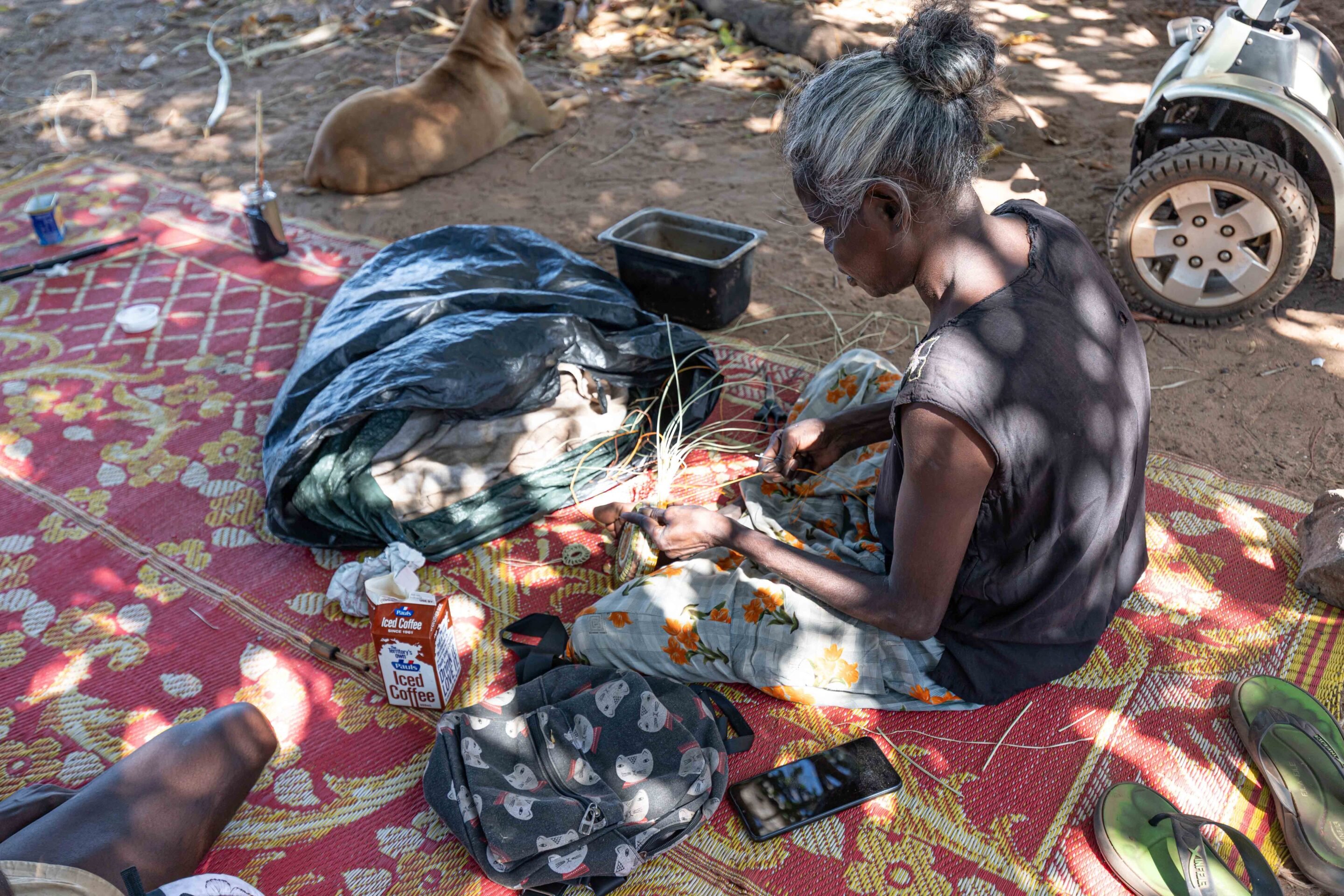
Wildlife and natural highlights
- Ecosystem: Arnhem Land is renowned for its diverse ecosystems, which support an impressive array of wildlife and offer countless natural attractions for visitors.
- Saltwater Crocodiles: These powerful predators are common in rivers, billabongs and estuaries. Always exercise caution near waterways, especially when swimming or fishing.
- Birdlife: A haven for birdwatchers, Arnhem Land is home to species such as brolgas and jabirus. Their calls and presence add to the region’s unique atmosphere.
- Fishing: The waters here are rich with barramundi and other tropical species, making Arnhem Land a dream destination for keen anglers.
- Scenic Landscapes: From dramatic escarpments to pristine beaches, the landscapes are as varied as they are spectacular, offering endless opportunities for exploration.
As you journey through this pristine region, always stick to safety guidelines and never become complacent. Respecting wildlife and protecting fragile ecosystems is vital to ensuring Arnhem Land’s natural wonders remain for future generations to experience.
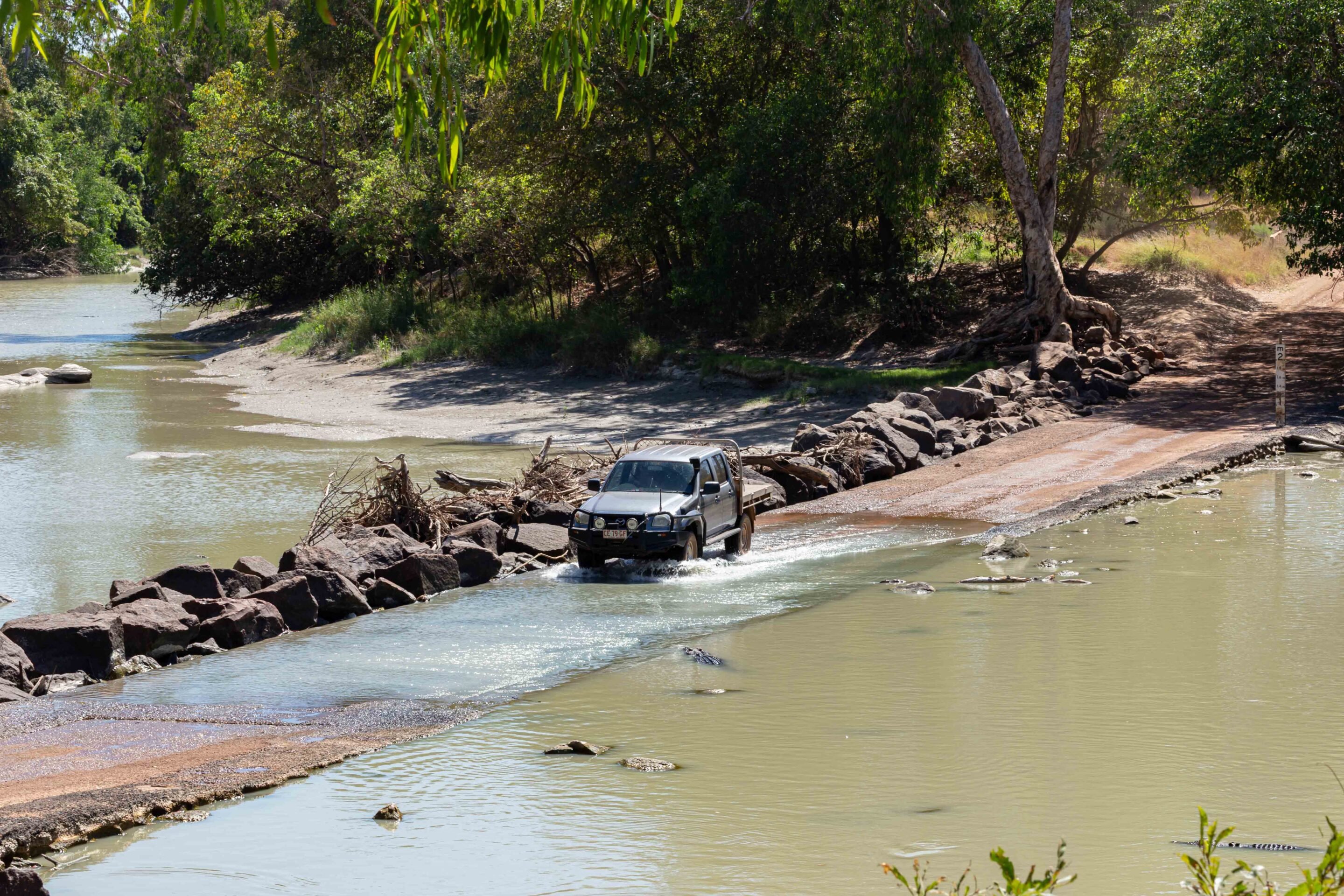
Safety and self-sufficiency
- Travel in Groups: Wherever possible, travel with at least one other vehicle. This improves safety and ensures help is close at hand in an emergency. If solo, make sure your 4×4 is well equipped and set up a clear communication plan with someone back home.
- Inform Others: Always share your itinerary, route and expected return time with a family member or friend. This information is critical if search parties need to locate you.
- Emergency Plans: Have a clear plan for emergencies, including evacuation procedures and the locations of the nearest medical facilities. Familiarise yourself with local emergency contact numbers.
- Vehicle Maintenance: Keep your vehicle in top condition. Perform routine checks before departure and carry spares such as tyres, engine oil, tools and a first aid kit to deal with issues on the track.
- Health Precautions: Pack essential medications, insect repellent, sunscreen and a comprehensive first aid kit. Sandflies and midges can be a real nuisance in the tropical climate, particularly around moist coastal and freshwater areas.
Preparation and vigilance are the keys to a safe and rewarding Arnhem Land adventure. With the right planning, you can minimise risks and focus on appreciating the region’s raw beauty and unique experiences.
Fast facts
- Best Time to Visit: May to October (Dry season) – cooler temperatures, accessible roads, fewer restrictions.
- Permits Required: General Access/Transit, Northern Land Council; Recreational & Camping (Gove Peninsula), Dhimurru Aboriginal Corporation; Cobourg Peninsula (Garig Gunak Barlu NP), NT Parks & Wildlife
- Fuel Stops (limited): Katherine, Bulman (limited), Nhulunbuy, Murganella (Cobourg Peninsula – diesel only, limited hours)
- Communications: Mobile coverage: limited to Nhulunbuy and select communities. We recommended a satellite phone, PLB (Personal Locator Beacon) and UHF radio.
- Vehicle Essentials: High-clearance 4×4; Long-range fuel tank/jerry cans; Recovery gear (winch, tracks, snatch straps); Air compressor, spare tyres, tools and parts; Comprehensive first-aid kit.
- Safety tips: Travel in convoy where possible; Carry enough food, water and emergency supplies for multiple days; Inform someone of itinerary and return date; Be croc-wise by avoiding rivers and estuaries.
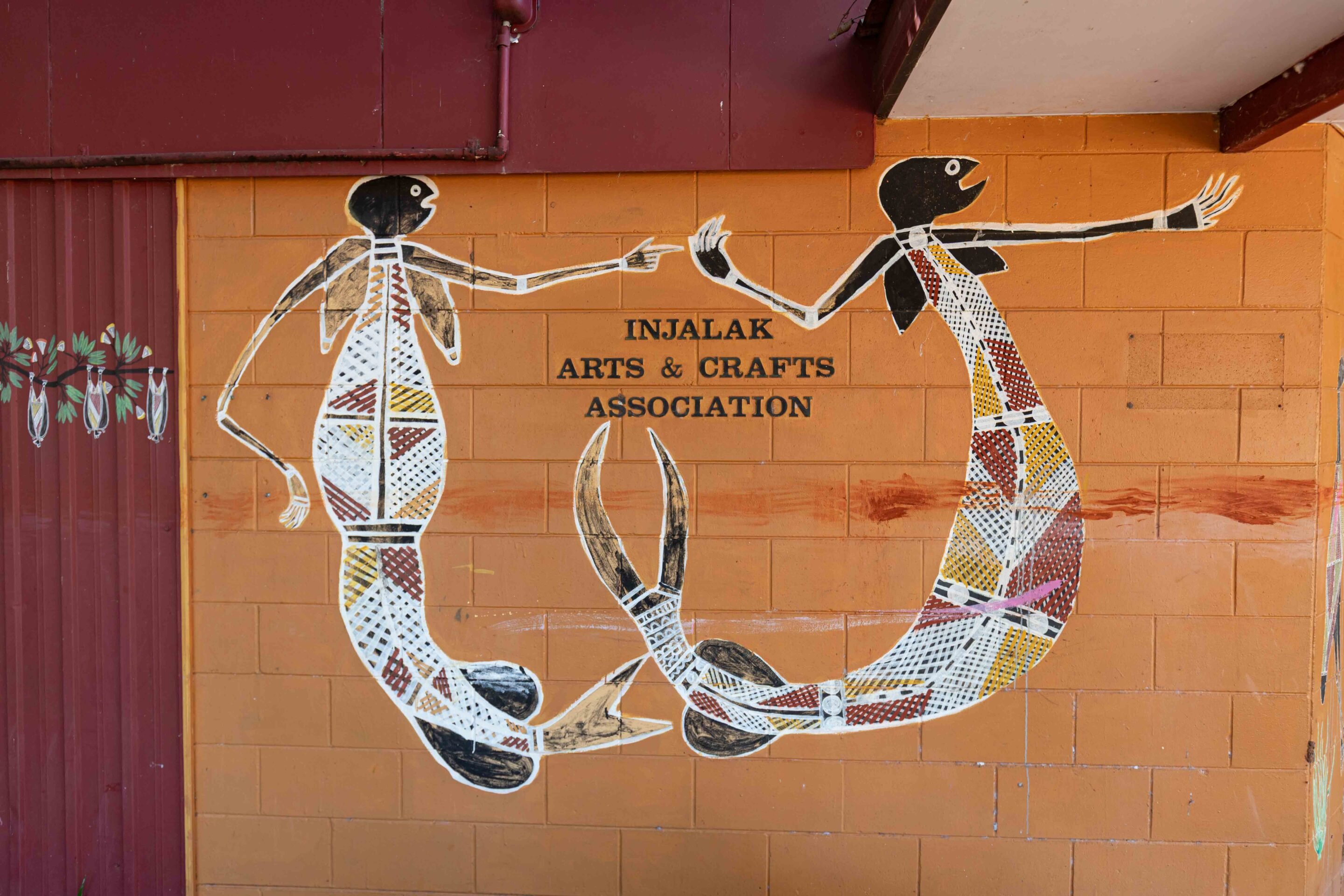
Top 5 must-visit locations
- Cape Arnhem Beaches: Remote white sands and red cliffs – perfect for 4×4 beach adventures.
- Buku-Larrŋgay Mulka Art Centre: World-renowned Yolŋu art and culture in Yirrkala.
- Camp at Little Bondi: Scenic beach camping with fishing and sunrise views.
- Drive the Central Arnhem Road: An iconic outback 4×4 journey through rugged country.
- Visit the Cobourg Peninsula: Wild coastal landscapes and rich history in Garig Gunak Barlu National Park.
A four-wheel drive journey through Arnhem Land is as enriching as it is adventurous. Beyond traversing untouched landscapes, it offers a rare insight into one of the world’s oldest living cultures
With careful preparation, respect for local customs and a genuine spirit of adventure, a journey through Arnhem Land will reward you with memories to last a lifetime. Access to this country is a privilege, not a right – and it demands humility and reverence for its heritage. Travel in a way that honours the land and its people, and you’ll discover an experience that leaves a lasting imprint on both heart and soul.
As you travel through Arnhem Land, pause to immerse yourself in its beauty, listen to the stories of its custodians and marvel at the unique flora and fauna that flourish here. Every moment is an opportunity for growth, learning and connection – with the land itself, with nature in its rawest form, and with the rich tapestry of history and culture that defines this extraordinary region.
We recommend
-
 Advice
AdviceCrocodile safety for 4WD touring in Australia – How to avoid croc attacks
Planning a trip through croc country? Here’s how to stay safe around the water.
-
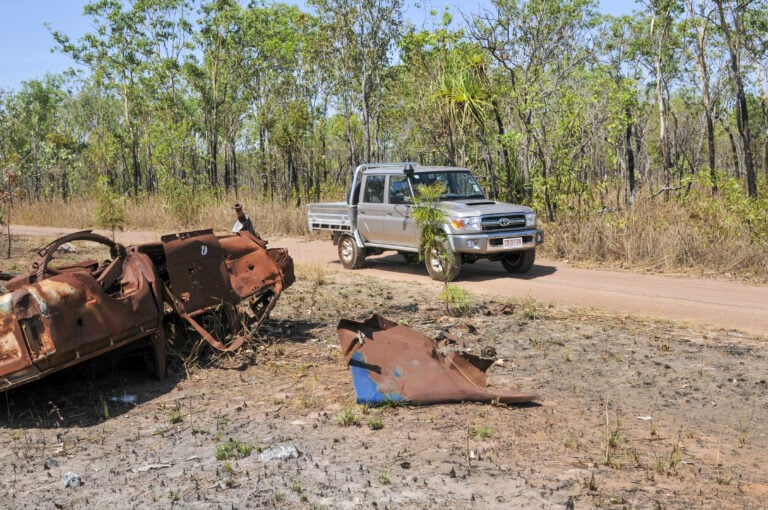 Advice
AdviceHow to survive in the Australian bush: Essential life-saving tips
When something goes wrong in the bush it can quickly become a life-threatening situation, but you can increase your chances of survival by following these top tips
-
 Opinion
OpinionDoes Australia’s permit system need an overhaul?
Travelling through remote Australia often means navigating a maze of permits and red tape, and it shouldn't be that way



